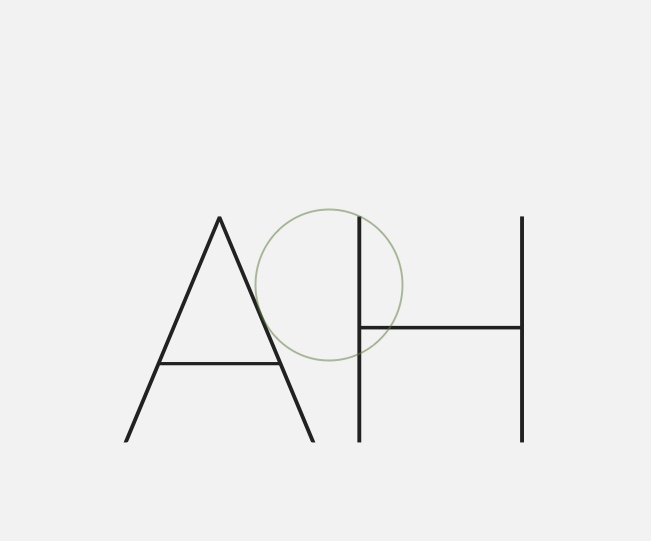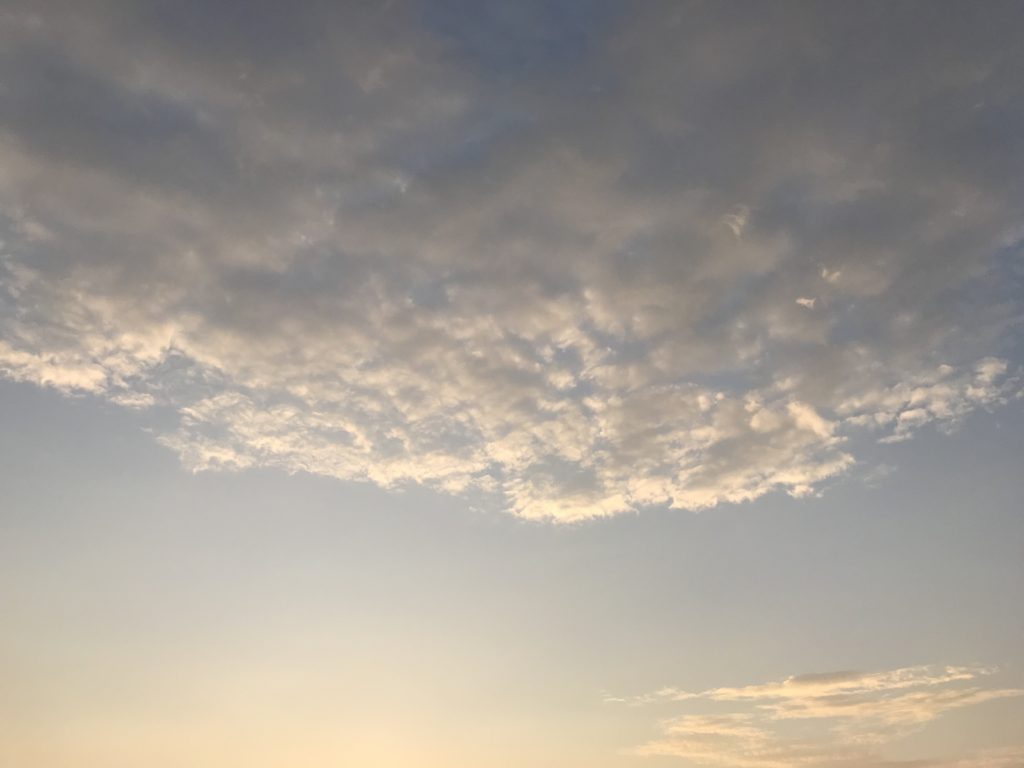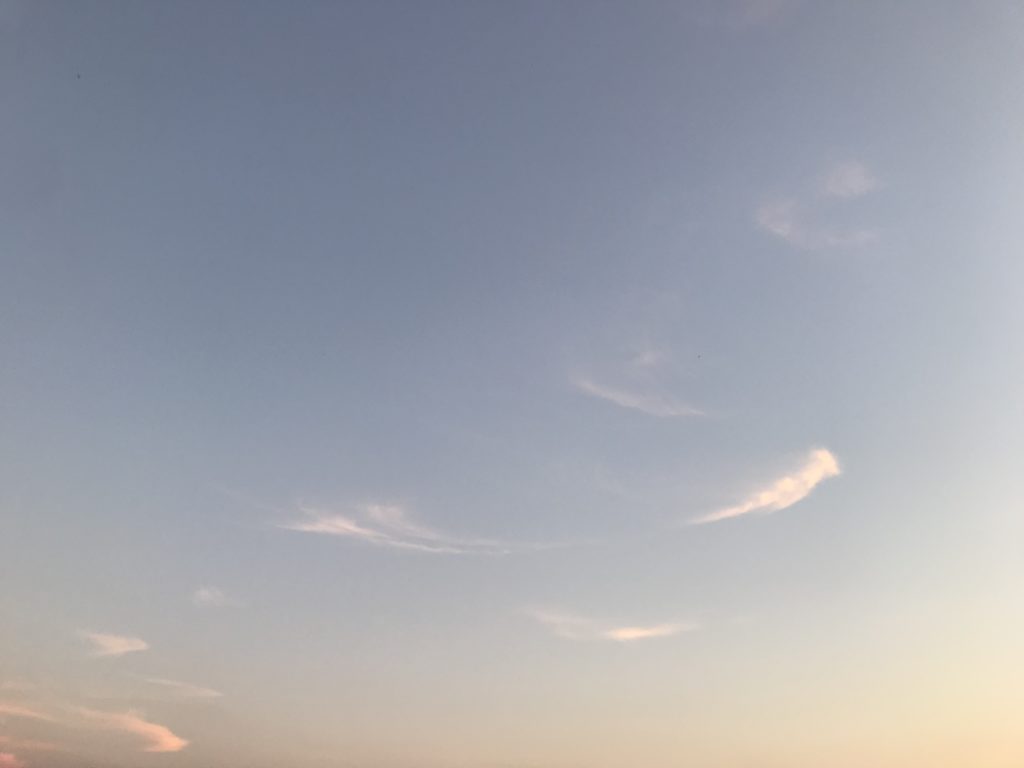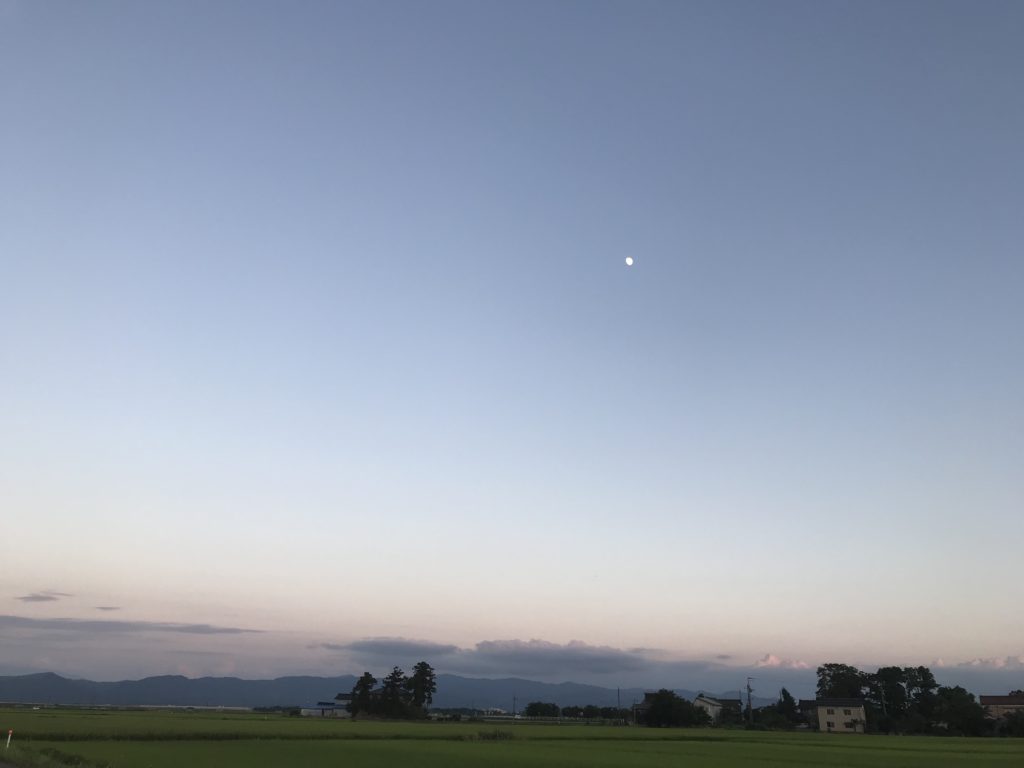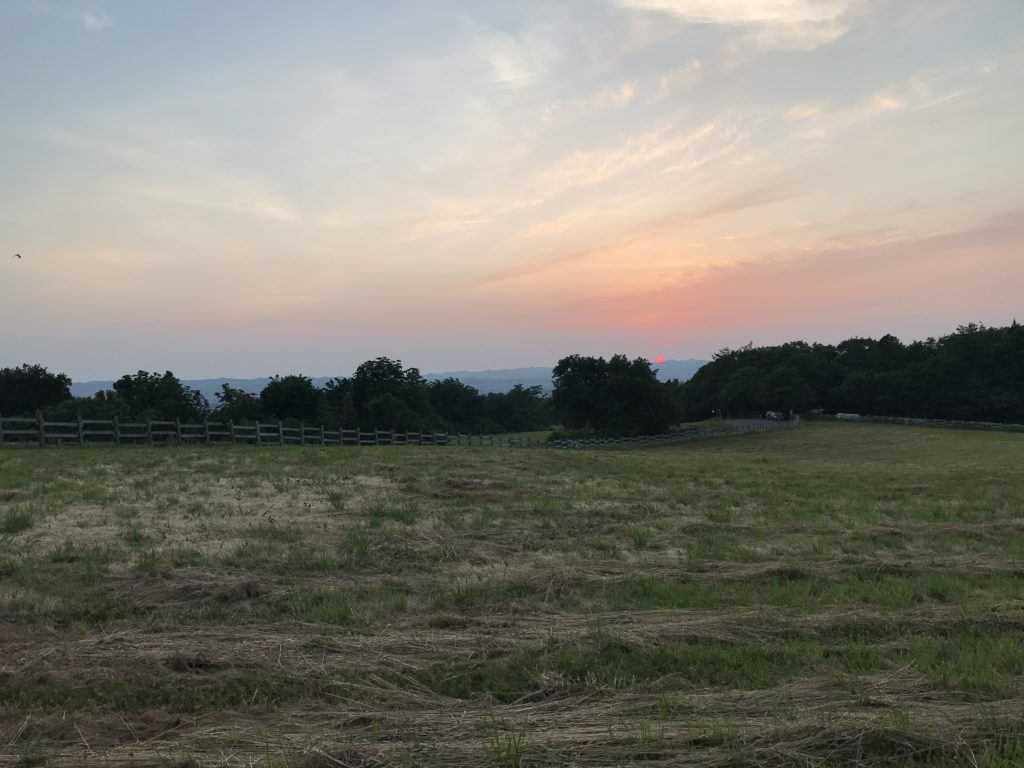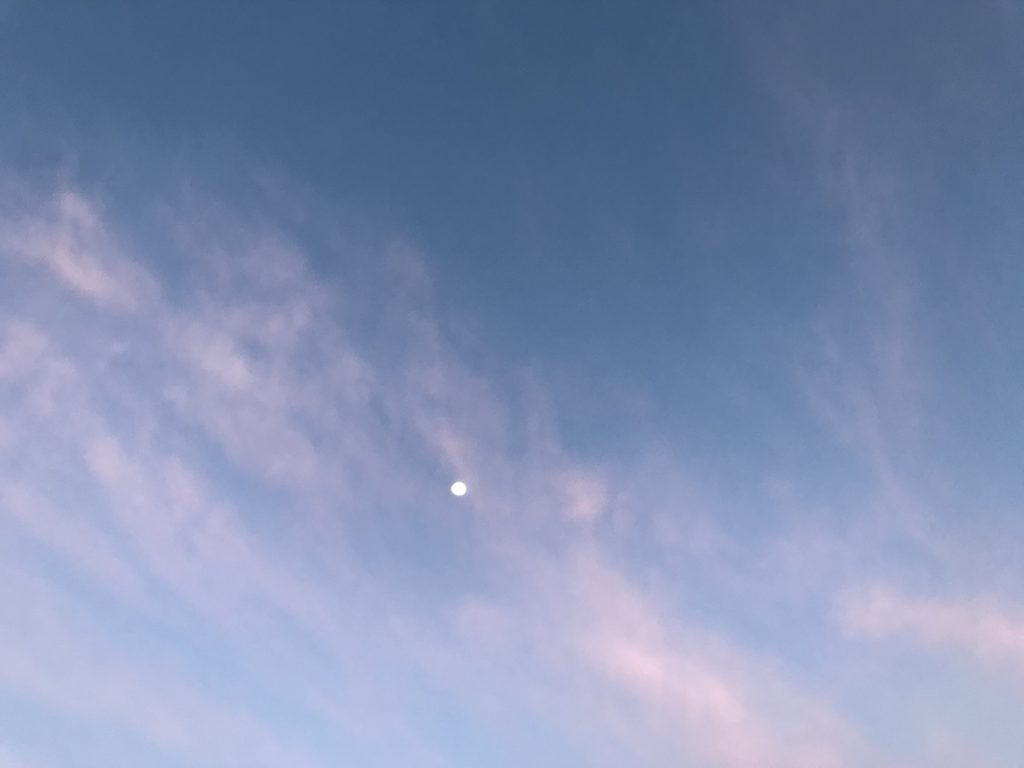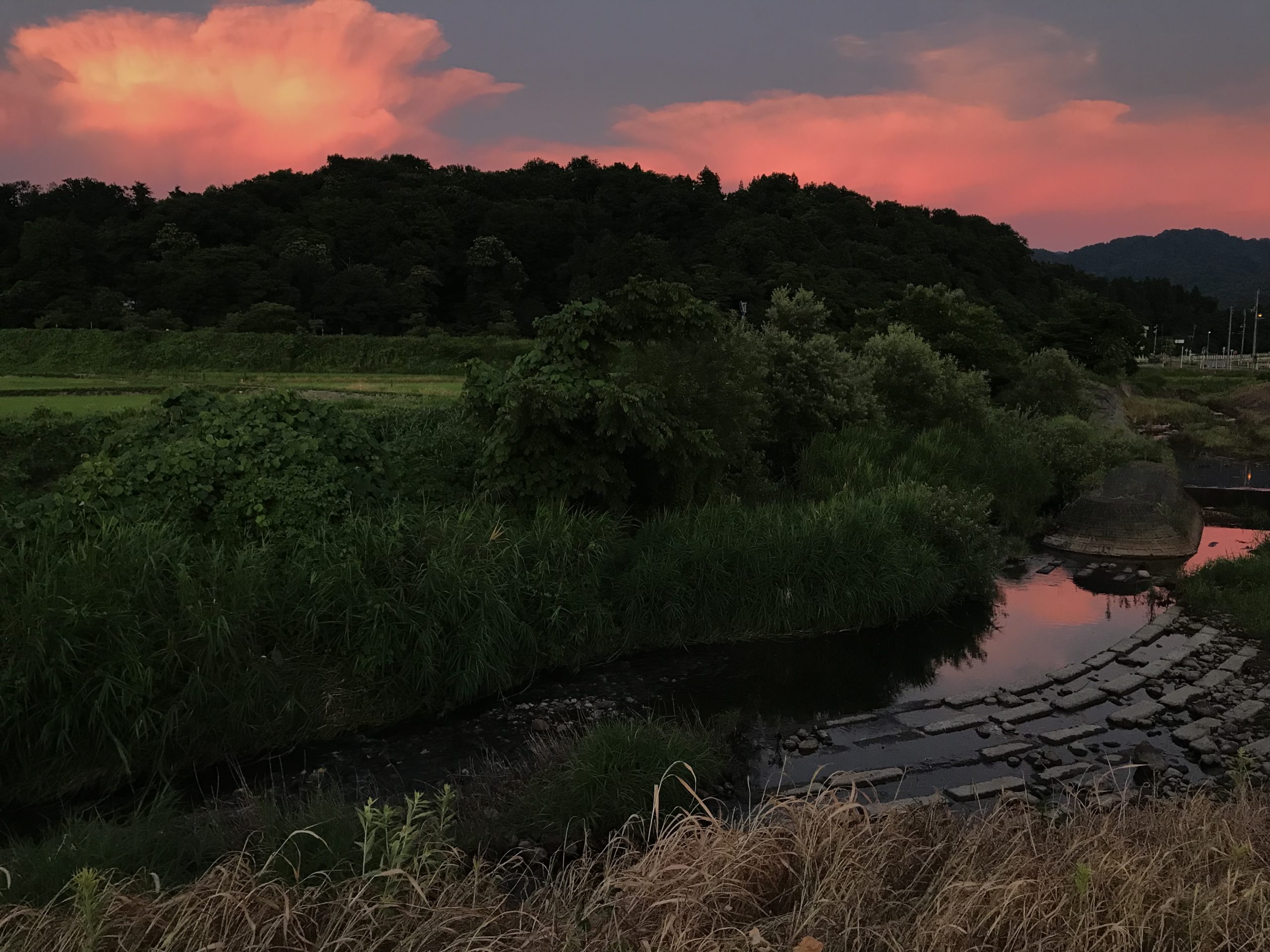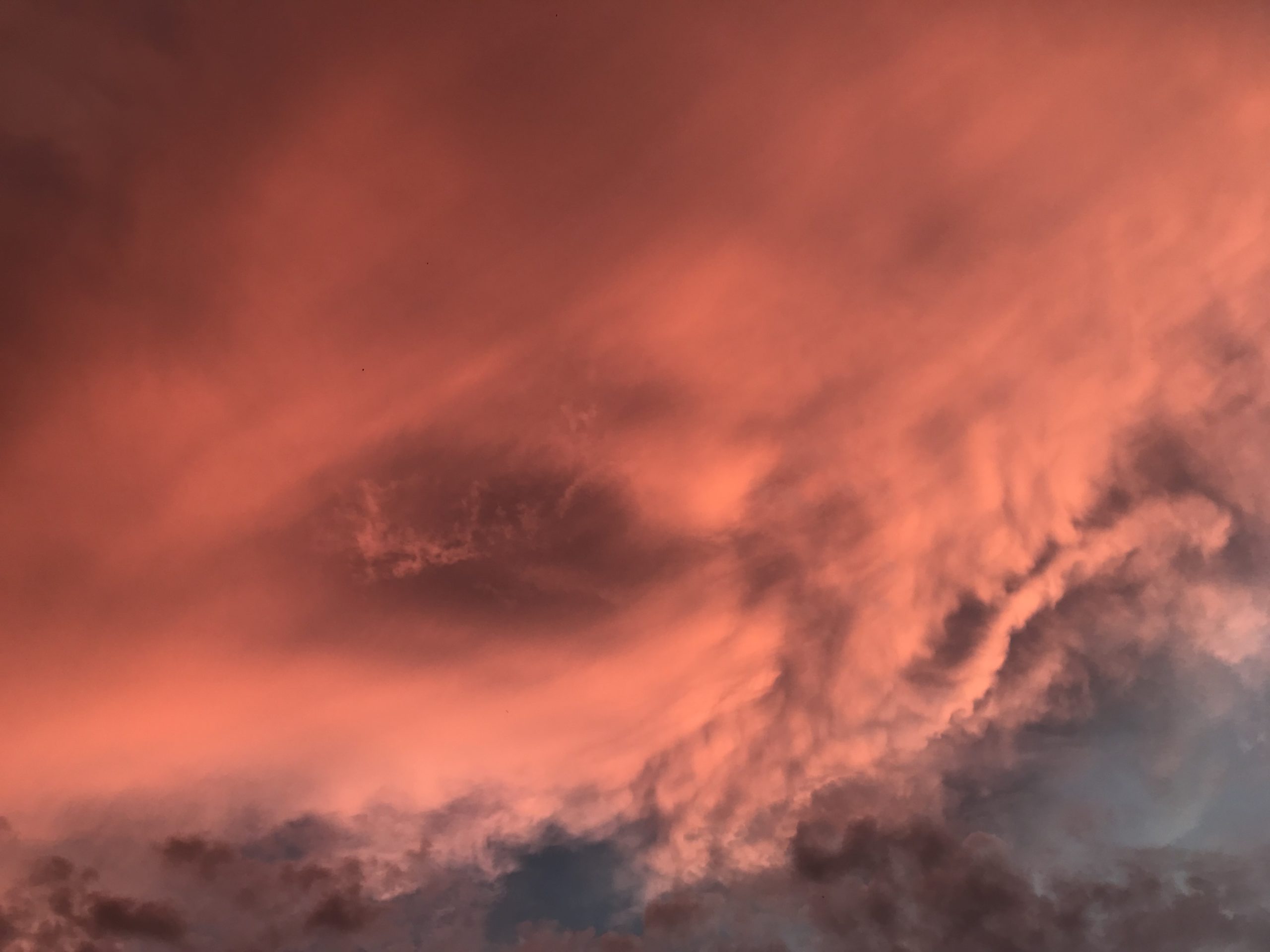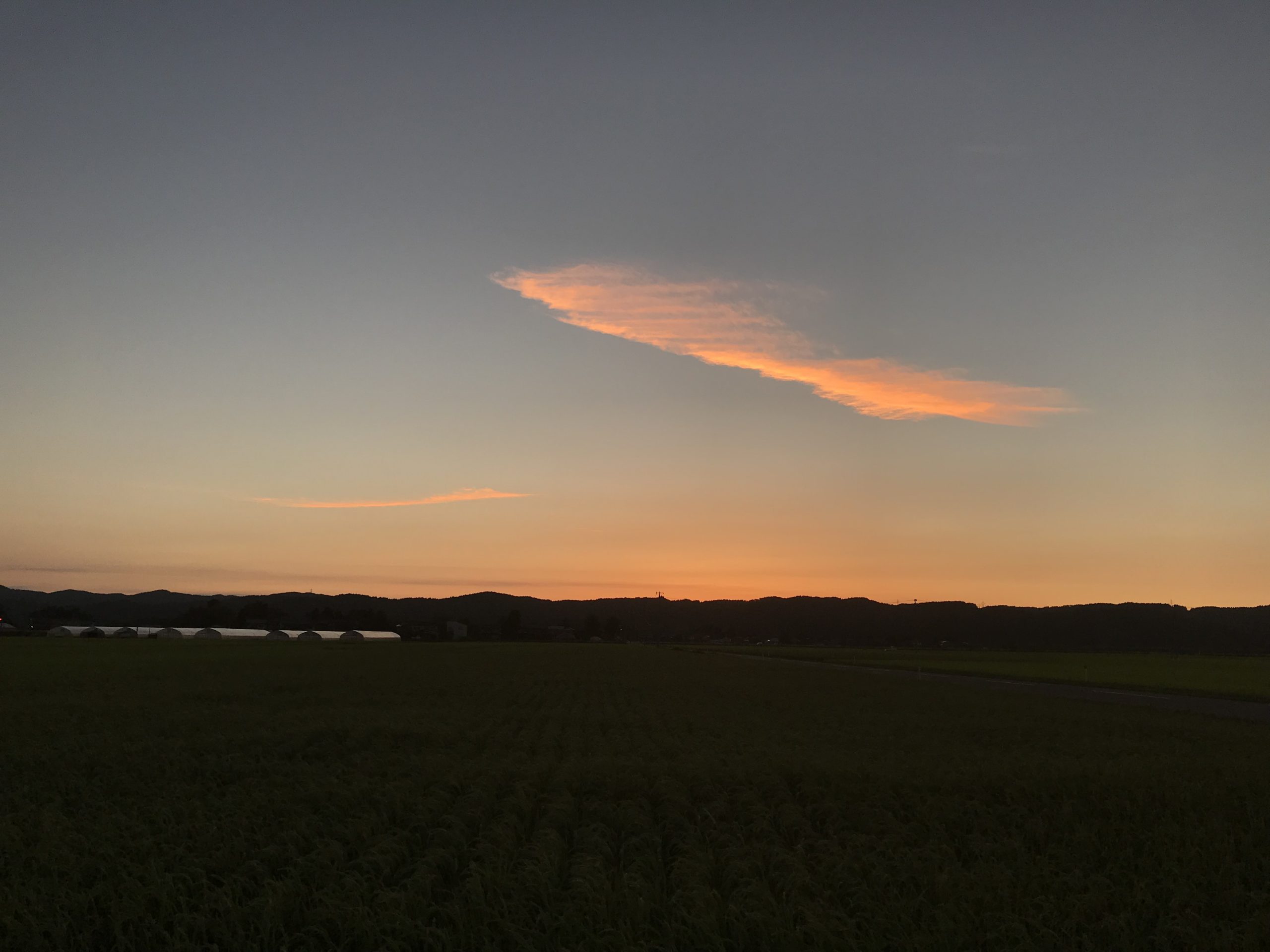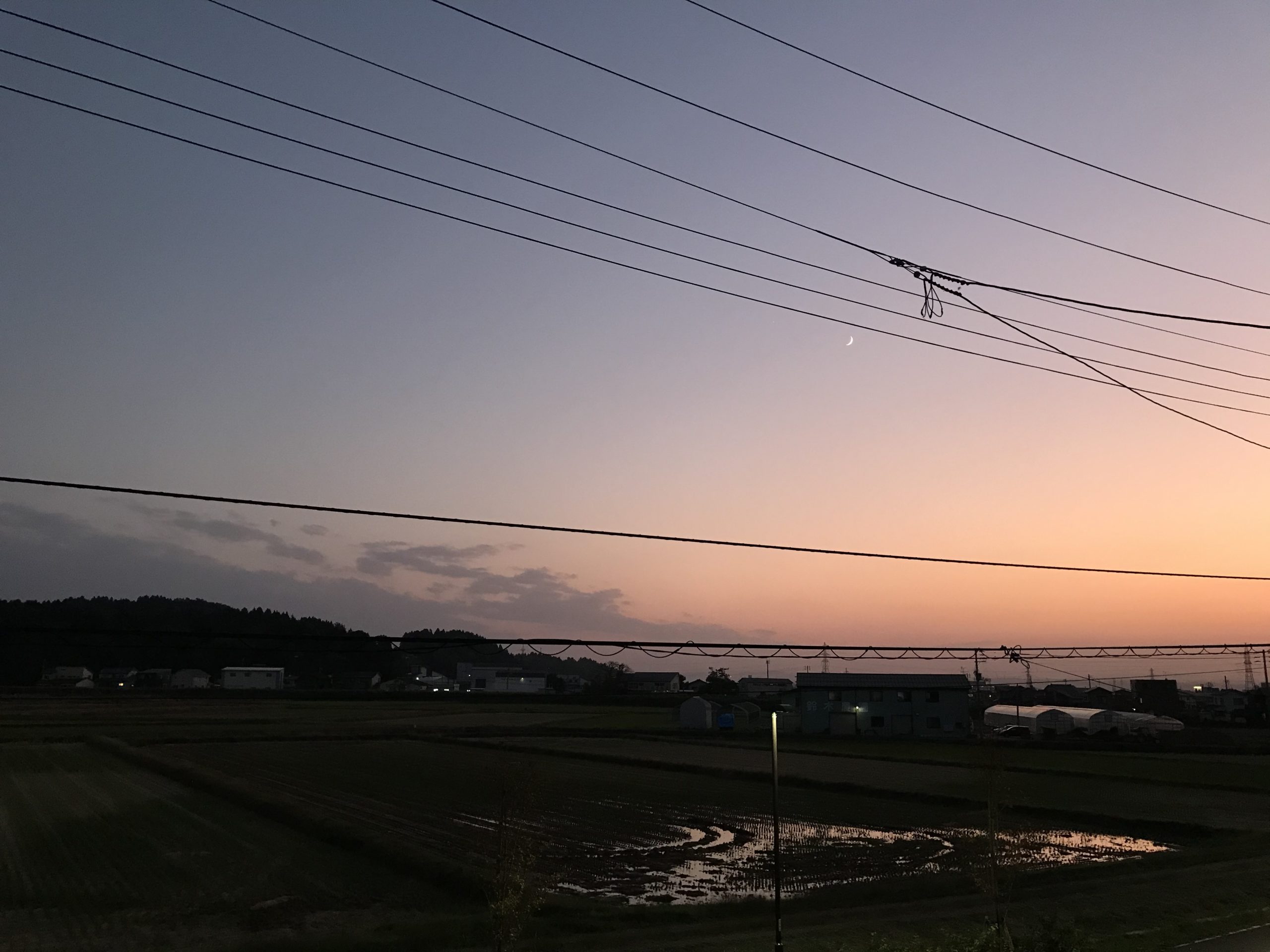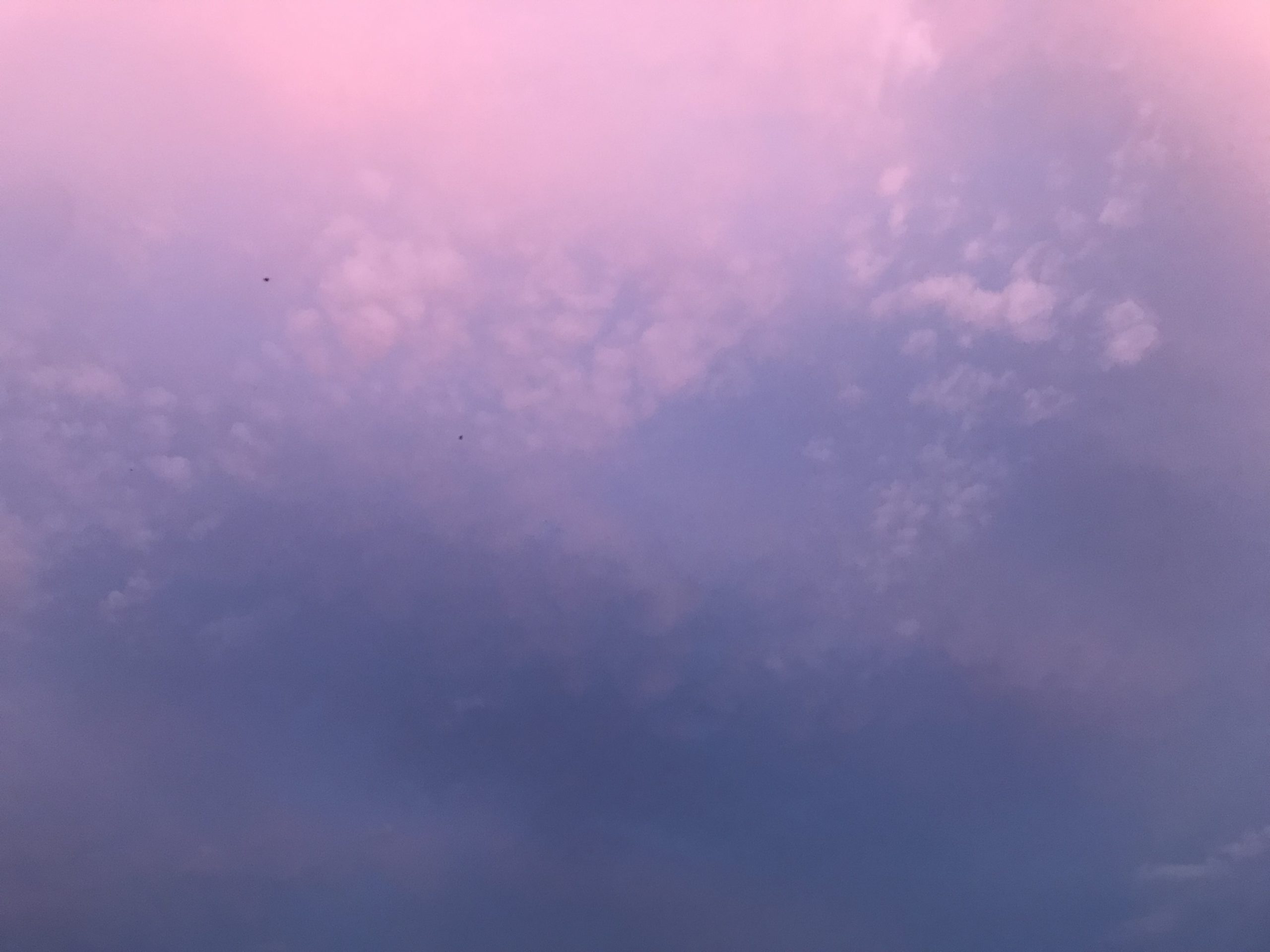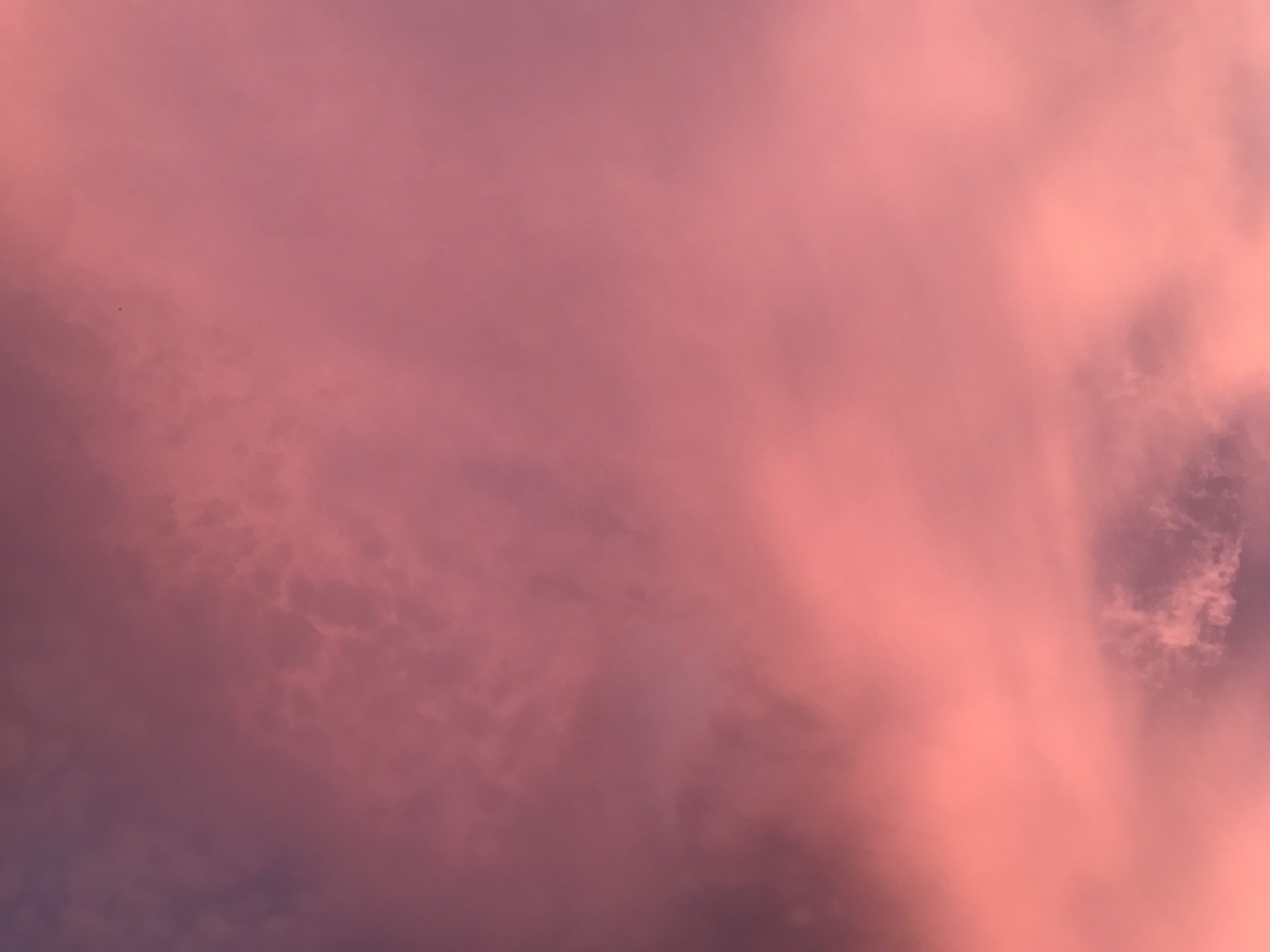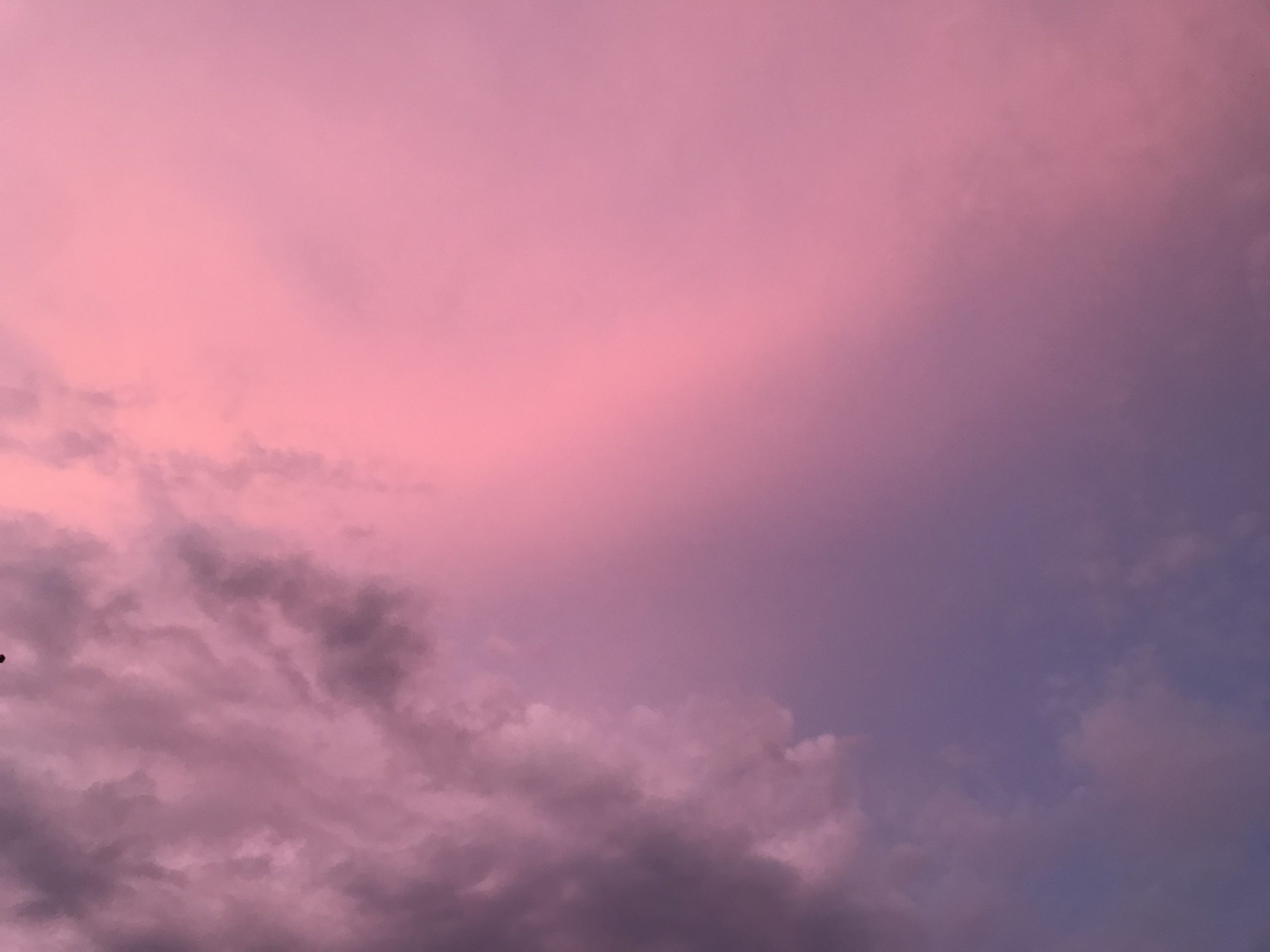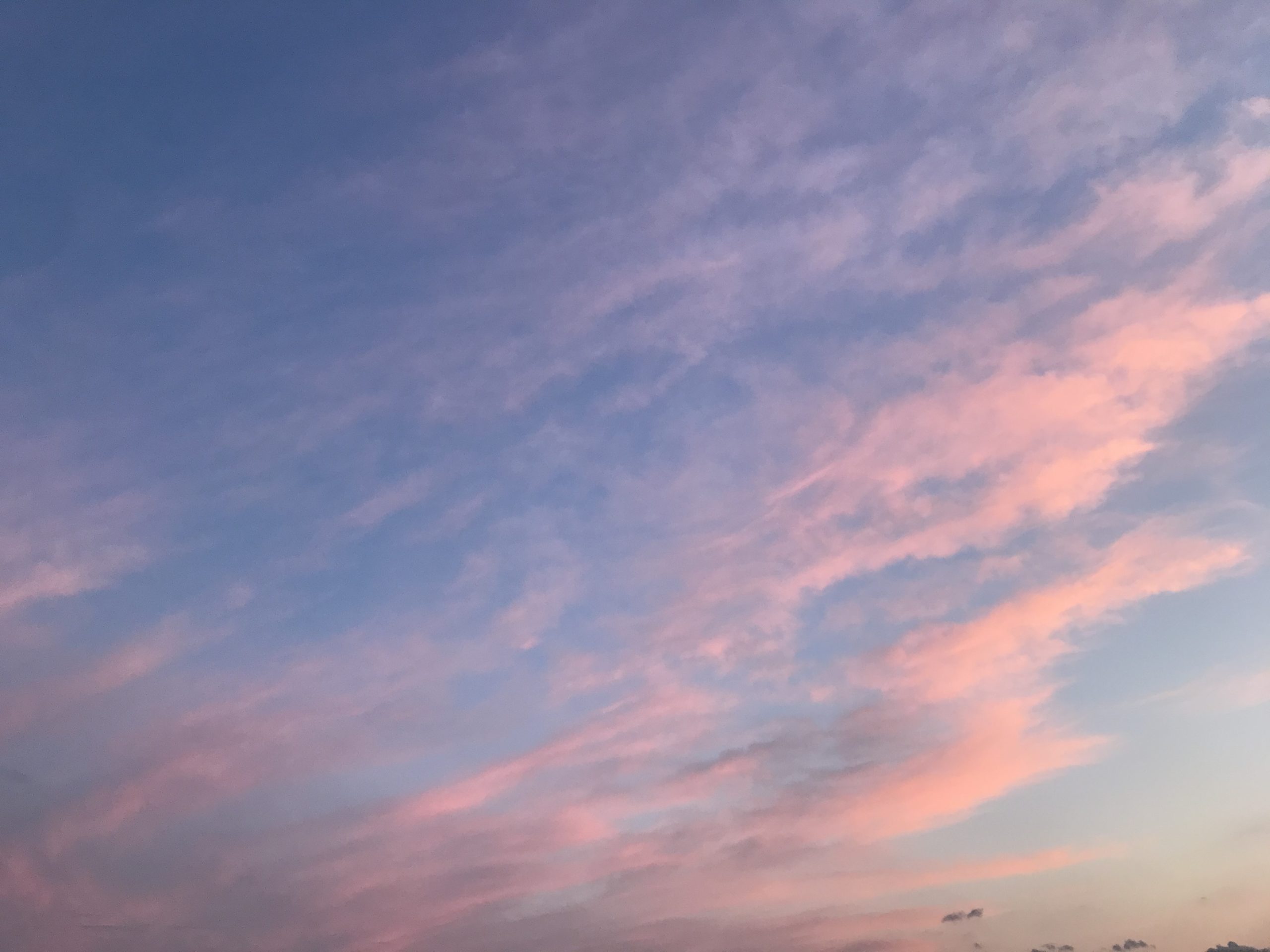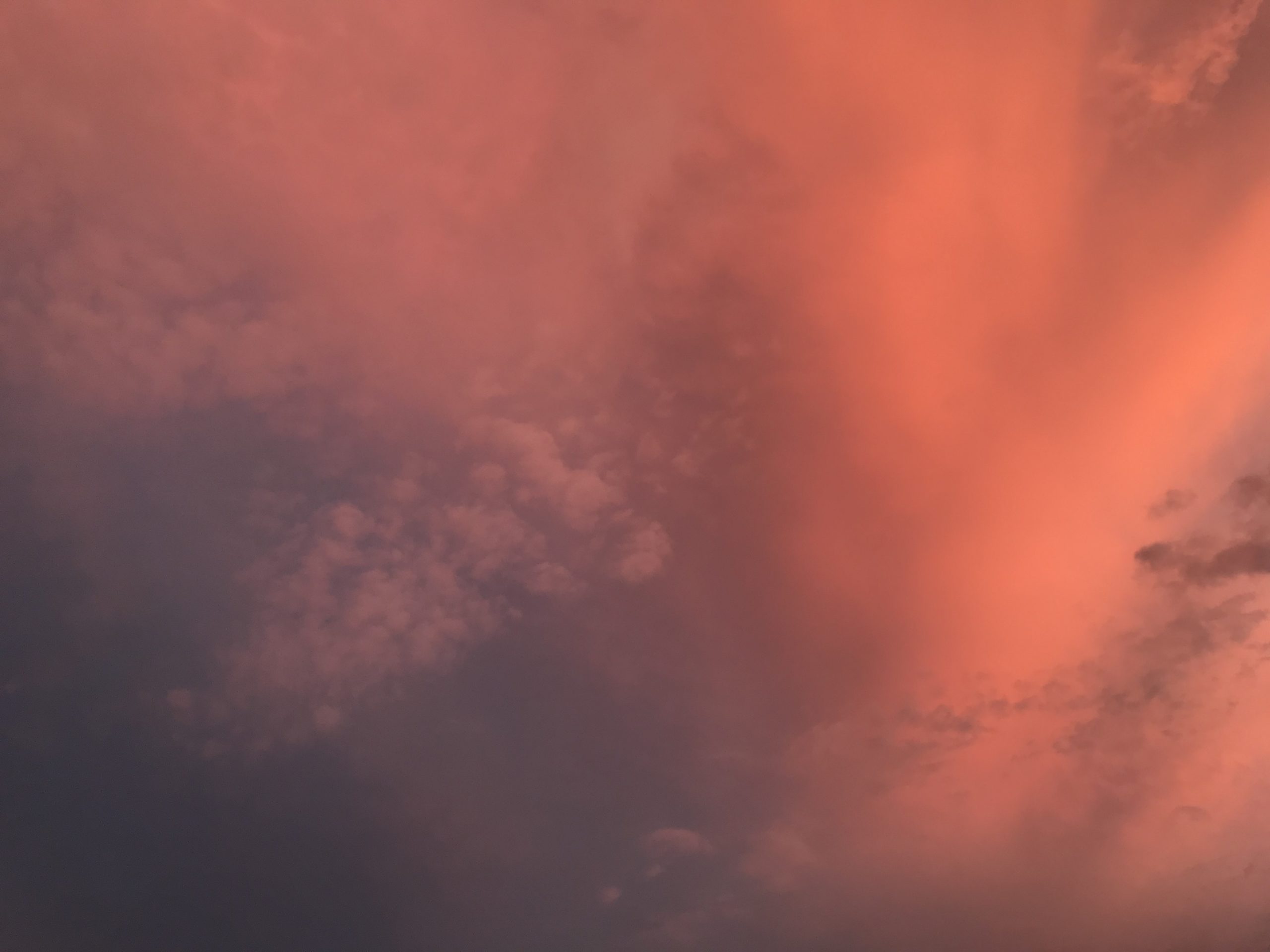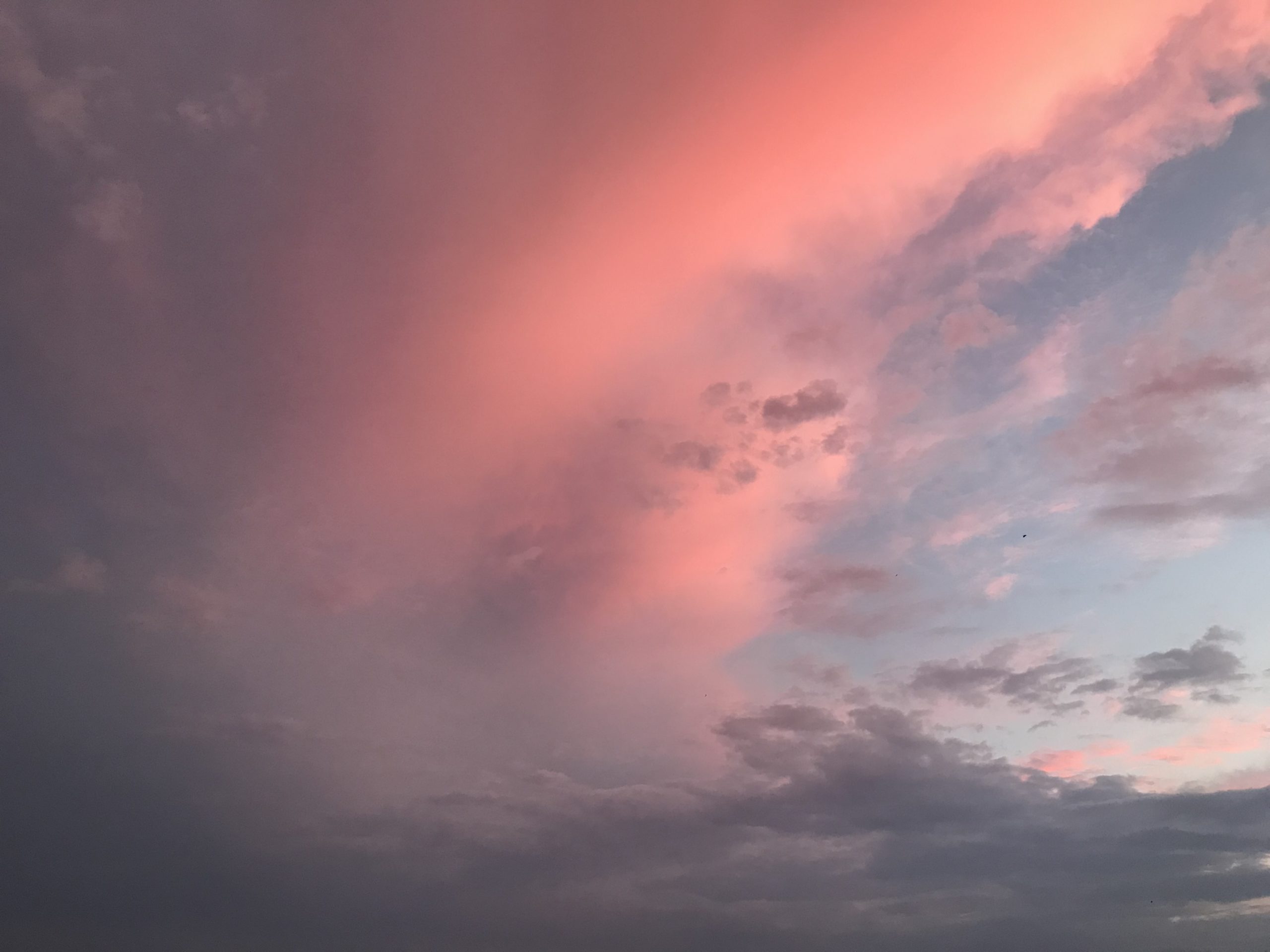From the Field into the Pink Sky
Ayano Hattori
Robert Simpkins
AH: In the process of collectively unmaking the Field, you proposed that a new space has emerged, where the ethnographer/anthropologist is ‘humanised’ and receives the creative and subjective space of expression. My question is when art lends that space of self-expression to ethnography/anthropology, and a new conception of a collective space emerges from the disintegrated Field site, what does an artist receive concurrently from those disciplines and from the collaboration? How do those embedded structures influence the artist’s experience of creativeness and the meaning of artmaking, which have always been for her the most affluent space of the sense of self, honesty, passion, aspiration, and transformation?
Spring has been a good example in which to reveal myself as an artist from this perspective. I made numerous ethnographical failures in my attempt to document ‘Robert’, and eventually abandoned my responsibilities. However, Spring has also been the only creative form of research outcome that I have tried to invest an equal amount of energy as I invest into my own artwork, believing it to receive the same quality of creativeness as in my individual practice conducted outside this collaboration. A definition of art emerges for me here, simply based on my experience of being creative, the quality of being so. It encompasses personal goals and aspirations, social contributions, honesty, and dedication expected of artists.
RS: Reading your thoughts, I notice a sense of restriction. This restriction appears to be connected to your engagement with art in a form that is modified to include ‘ethnographic’ elements. While I experienced enjoyment in the freedom of making art at a non-professional level in our collaboration (without the structure of more standard ethnographic methods), your professional sensibility as an artist appears constrained by the concessions that you have felt yourself required to make in producing Spring. It appears that the process left you bereft of a creativity that you draw from, a creativity which exists in symbiosis with artmaking as ‘honest’, ‘passionate’, and ‘transformative’. Reading your reflections, it seems as though the collaborative element of Spring as a work of art and creative writing, which would also function as an artistic practice of ethnographic documentation, reduced your creative ‘existence’, diminishing the space for you to be a part of Spring as an artist.
AH: I began writing Spring at the very first stage of our collaboration. I was quickly board with documenting you as ‘Robert’ there even though it took a form of creative writing. This ‘Robert’, as I discovered later as Spring develops, differs from how you exist in my life through this collaboration. I also know that ‘Robert’ is not the name you want to be called by. As the collaboration grows and I come to know you as a person, the address has become disconnected from our actual relationship, and ‘Robert’ has become a novelistic character or an element that shapes an artistic world. The ‘boredom’ is a key word in my creativity. It does not refer to a dictionary definition but comes from an empirical place of making art and engaging with the world creatively. As a professional artist, I take great care of my creativity, as athletes do of their physical condition. The boredom creates a downward spiral, leading my creative being into a death. The boredom is a response from an action I make in the world, and when I experience it, it is a sign that something is wrong. For example, in writing Spring, the first few times had enough novelty to inspire me to document ‘Robert’, but it became boring as it quickly turned into a feeling of duty and responsibility that alienated my creative being. The expected regularity of documentation became disconnected from how I was feeling, forcing me to conduct it just as a duty. Then, I had to betray myself in convincing myself that I was interested in doing it. I did not feel any passion doing it. I think that this is a contrasting effect from the one in which you are humanised and receive freedom, but on the other hand I felt ‘de-humanised’ in that way. My boredom was beginning to be reflected in my words and attitude towards writing.
One should be rewarded from the creative activity one engages with and there should be a positive circulation of energy from the source of inspiration, one’s response to the world, the process of creative acts internal to the person and on a material level, to the re-introduction to the world. There are also things that should not become public, and ways in which things should not be expressed within a general conception and the ethics of ethnographic research. I started becoming frustrated with all of the restrictions, being unable to give my creativity full wings. I did not have a space to dwell in my own writing of Spring. It was alienating. Instead, the trope of ‘we paint the sky pink’ emerged. The desires to cultivate it and to find out what the trope means captivated my mind.
I decided to live with my inspiration and own endeavours. It seemed to me the only way I could live with Spring. I decided to gain the wings and fly into the pink sky to discover it literally, being the part of the sky. I fully immersed myself to create the world and dwelled there. As a result, I abandoned the ethnographic responsibility and eliminated ‘Robert’ from the world of Spring that I wanted to cultivate.
RS: I think that the transition of ‘Robert’, as somebody who is a collaborator and subject of your artistic form of ethnographic writing, to ‘Robert’ as a character who is part of the creation of an ‘artistic world’, is interesting in the context of boundaries and lines of differing visibility that exist in our collaborative attempts to bring art and ethnography together. In your thoughts there is an experience, again, of the limitations that the ‘science’ of ethnographic fieldwork places upon you as a practising artist – the ‘expected regularity’, the ‘duty’ and how this is experienced as a loss of subjective expression.
I have a sense that the boundary of what is artistic practice for you, is a little more defined or susceptible to being breached, than my conception of what could constitute anthropological practice and material. Anthropology is interested in how people engage with the world, and so the focus is usually on other people and what they do. Ethnographic research can and should adjust to each new social situation or research subject, so a flexibility of method is actually fundamental to the discipline. Consequently, while there are general principals of research, what constitutes anthropological material is an ongoing discussion. In cross-disciplinary collaboration, this is the case to an even greater extent.
Your reaction to the writing of Spring suggests that ‘what is art’ and artmaking for you are more fundamentally tied to your sense of self: a profession, but also an identity grounded in principles that define who you are. Spring seems to have become a place of artistic rediscovery, in contrast to the practice of writing ‘fieldnotes’. In my work, I could not redefine or reinterpret a research subject as a fictional character, but at the same time, it would be misguiding of me to suggest that there is no subjective creation in the process of doing ethnographic work. Anthropology today accepts that an account by an anthropologist will be subjective, which is why open debate and discussion is important to the discipline. In your case, however, in the case of Spring, it appears that the fictionalisation of Robert – a reclamation of your subjectivity – was necessary in order for you to remain present in the writing as an artist. So there appears to me an existential issue that is more prominent for you in the compromises required to write with a more ‘ethnographic’ approach.
AH: ‘Robert’ was hardly an ethnographic subject, who becomes the focal point of documentation to understand with veracity as another human being, but instead became an artistic element that can be easily deleted, if not needed, to elaborate the world of Spring. Spring is a pure fiction in this sense, although ‘Robert’ appears as the ethnographer/anthropologist and his description is based on my felt reality. Spring is rather an embodiment in the fictionality of a reconstructed world, which does not borrow any ethnographic sense of veracity and authenticity for itself. This draws a clear line with your attribution of me as a reality in Strawberry, Coat, and Shoot within these conceptions.
RS: Yes, I see. But in some sense both the embodiment of ‘Robert’ in Spring, and your presence in Strawberry, Coat and Shoot, appear to me to be interpretations of us to a greater or lesser extent. In terms of the difference between these interpretations, it may be that I am less clear about how to understand your presence in these works, which are more artistic than I am used to producing as a form of ‘ethnographic’ documentation. You make a clearer distinction in Spring as ‘pure fiction’, which seems to me to be related to the degree to which you felt able to engage with Spring as an artist without this shift to fiction. There is certainly a clear difference, though. As you said, ‘Robert’ could be easily deleted from the fictional world of Spring. Ayano, however, is a part of the music and the poetry that I composed.
AH: Being an artist, I would never be punished for this abandonment, the lack of veracity, or for the diversion of calling Spring art rather than an ethnographic document because the pursuit of an artistic world is attributed to artists. It would not be the same for an ethnographer/anthropologist.
Not being an ethnographer/anthropologist myself, the notion of the Field, whether it is colonial or not, never existed in my profession, including my PhD research in which I conduct auto-ethnography. Here underlies the fundamental conflict between us when our outcomes are labelled as ethnographical or anthropological, or when I disagree and reject this basic reality of the Field in our creative work: we lose the reason to create together, and so to collaborate. Regardless of your tireless effort to unmake the Field as a post-colonial anthropologist, an artist within collaboration has autonomy to create art by herself. So, I flew away from the Field and into the pink sky with the wings I gained. It could be said that, for me, this collaboration is an auto-ethnography that addresses my experience of being an artist in an ethnographical framework of artmaking.
RS: Your perspective here is interesting and, in fact, eye-opening in terms of criticising the underlying structures of research practice that our collaboration set out to rebalance. I can see how this collaboration has been an auto-ethnographic experience for you, as an artist attempting to understand how your experiences of ethnography (in your previous auto-ethnographic work) exist in relation to your experiences and practice as an artist. In your own experience, as you said, the Field was never a part of your practice, and your engagement with ethnography did not require interlocutors because of its auto-ethnographic approach. I can see how collaborating with me, even as somebody who wants to deconstruct the Field, could be an uncomfortable experience of exposure to structures that so much of your own work exists in an antithetical and principled contrast with. I wonder how much your fictionalisation of Spring is also a rejection of those underlying structures.
AH: Spring, as a crystallisation of an artistic world, has given Spring a life, which was the goal or ultimate state that I wanted Spring to achieve as an artist. I established my voice as a woman who is a writer and painter, which was already recognisable when I first wrote Spring to document ‘Robert’. There are abandonments here of my identity as an artist-collaborator, a research subject, and a documenter of her researcher (the ethnographer/anthropologist). By abandoning the representation of ‘Robert’, I abandoned one way of rebalancing power. The abandonment of those identities seems to be a fundamental destruction of the structure of the collaboration itself. Art or creativeness seems to have an entropic power in that way.
In exchange for this abandonment of my collaborative identity, I established a new subject voice that is true to my writing self. This woman who writes and paints, who I established, further developed in an art historical sense to execute a feminist subversion of objecthood. The objectification of women can be found in many paintings and films across the modern history of art. By describing sensations on my skin against chilled winds or bedding, or food and drinks in my mouth, I subvert the traditional objecthood of women and recover subjecthood in experiencing and expressing those. Trained in the discipline of visual art, in Spring I establish the woman by words, who is ‘invisible’ to the readers. As in the utter absence of gaze in the act of reading, Spring rejects any gaze that stares upon her, including a heterosexual male gaze known as ‘male gaze’ in a film theory. Furthermore, gaze is ‘touching’ in performance theory, so my writing describes the act and sensation of touching, and is tied to the act of painting as a brush has contact with a canvas. An establishment of a subject voice is often an important element in my artwork as it is a form of empowerment. Those subject voices I establish are often ones that are suppressed and marginalised in grand narratives and canons in society.
RS: You recognise the establishment and repositioning of Spring, from its initial collaborative endeavour to your fictional creation, as an ‘abandonment’ of the collaboration, but I think that the abandonment itself could be a form of collaboration in the overall context of our project and its aims. You explain how art can have an ‘entropic’ power, and how the abandonment coexisted with the establishment of a new subject voice. In terms of redressing the balance of ethnographic research and interpretation, and the construction of knowledge, in Spring you have reclaimed a position from which you, as an artist, are able to direct the processes of creation and interpretation.
AH: Spring in Spring is a season located in between winter and summer. In the gradation of the seasons embodied through the rich depiction of details, the beginning and end of spring is never clear. As the subject voice of Spring, I live in the constant change of seasons, the transience. Spring is also in proximity of the memories of past summers recalled in the warmth of the coming season, and the cold of the passing season. It is a felt moment of the recognition of the present, and the fading memories of the past on my corporeality in response to a season called spring.
Coat is your interpretation of late winter that I lived in Niigata, and Shoot is of early spring based on your felt reality intervened by technology. Spring presents my interpretations of those two seasons based on my felt reality. Those two seasons in those three outcomes are completely different, each establishing unique subject voices that lived and shared the same time of year. In the same way, 9:30am and my description of a morning in Spring are completely different.
Truth is not absolute nor singular, but multiple, existing in as many ways as it is experienced. But we tend to believe that there is only one truth. If the readers read only one of three outcomes, they would think that what is written there is the only truth, failing to realise there were other experiences of equal value as truth. Science, including anthropology, also seeks the truth, even if it is accepted as multiple. So, when Spring as art lends itself as another truth, as in the last paragraph, to be compared in order to show plurality, is it absorbed into a framework of anthropology (to provide an understanding of a human beings, or to reach other goals of the discipline)? My answer is that I won’t let it be so as an artist. Rather, I will let it gain the entropic power once again to refuse.
RS: As you rightly say, truths are plural, and recognised as so in anthropology. Your insights about Coat, Shoot, Spring and 9:30 am are valuable here. One reading alone, one listen or one look, would create a distorted view of the world appearing in our collaboration. This is why multiple perspectives are more so important, and why they must be encouraged in redressing the balance of interpretive power also associated with the Field that we aim to deconstruct. I think that your final thoughts are equally important. It is also necessary to question which truths are given credence over others, how our societies may value certain truths over others, such as those of rationalism over empiricism. Why should art not be an equal teller of truths as professions like anthropology that claim the credibility of scientific method? Personally, I believe that art can illuminate truths or knowledge about living in this world that anthropology could never come close to achieving. In a collaboration, surely both must be given equal space to create new understandings.
You asked if Spring would be absorbed into the framework of anthropological interpretation. You also stated that you would not let this happen, and would rather retain the entropic power of Spring to defy the imposition of other frameworks of knowledge. I would say that Spring should remain as Spring, and that if our collaboration has taught us anything, it is that you must insist that this be the case, and that Spring, and your space as an artist, is given its space to exist as complete.
We looked over the pink horizon dividing the world into the sky and the sea. The sun painted the sky pink, recalling memories of the distance past, bleaching the flare of passion into pink. The tide was in, saturated with the sense of longing for what had been lost. Breeze blew towards us constantly from the sea. In the constancy, the reminiscence of passion swelled. It started to live its own life.
– Spring



